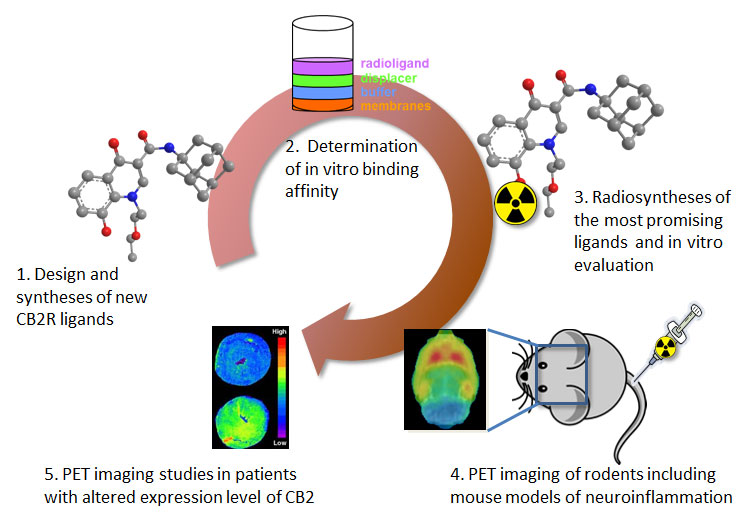Cannabinoid receptor 2 (CB2)
Introduction
The anecdotal use of cannabis as a therapeutic agent dates back about 5000 years with descriptions of its numerous effects including alterations in mood, cognitive functions, memory and perception of the user. Compared to CB1, which is expressed mainly in brain regions, CB2 is described as a peripheral cannabinoid receptor and mainly expressed on cells related to the immune system on keratinocytes. CB2 has very low concentration in brain tissue under basal conditions, however, it is up-regulated in cerebellum, cortex and brainstem in pathological conditions such as neuroinflammatory and neurodegenerative diseases including Amyotrophic Lateral Sclerosis (ALS), Multiple Sclerosis (MS), Parkinson’s and Alzheimer`s disease. Therefore, the CB2 receptor has attracted a lot of attention in recent years and is regarded as a very promising target for both non-invasive imaging and possibly therapy with a high clinical impact.
Research goal
The goal of this project is to develop a suitable brain tracer for the non-invasive imaging of cannabinoid receptor 2 (CB2) expression in patients with neuroinflammatory diseases.
A series of novel CB2 ligands have been designed and their syntheses and in vitro characterization are currently in progress in our laboratory. In vitro evaluations include binding affinity / lipophilicity determinations and autoradiography using murine spleen tissues and brain slices. The most promising ligands will be radiolabeled with either C-11 or F-18 radionuclide. In vivo evaluation includes biodistribution and PET studies using rodents and different mouse models of neuroinflammation. The final goal of this project is to perform clinical PET studies in patients with suspected alterations in CB2 expression levels using the ligand with the best in vivo properties.
